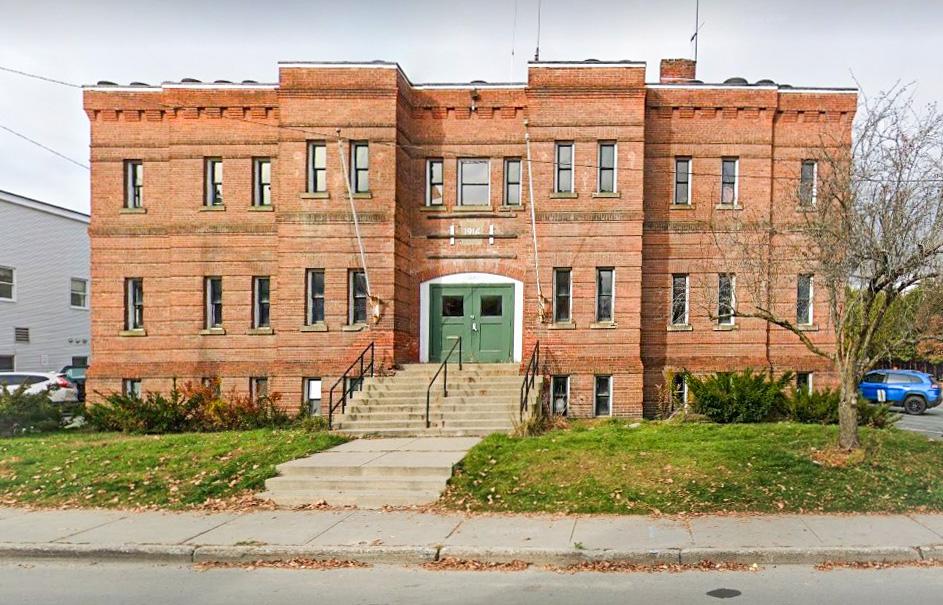Revitalizing Abandoned Properties: The Armory Project in St. Johnsbury, Vermont
According to the U.S. Government Accountability Office report, there are over 1.5 million abandoned properties in the United States, many of which are in disrepair and awaiting revitalization. These neglected sites range from empty office parks and shuttered industrial buildings to abandoned shopping centers and residential properties. However, with a clear vision and a thoughtful action plan, these spaces can be reimagined into vibrant community hubs.
Preserving the Armory's Historical Significance
Built in 1916, the Armory has been a landmark in St. Johnsbury, Vermont for over a century. Initially used as a military facility until 1975, it later served as a community recreational center until 2009. The current redevelopment plan balances historic preservation with modernization by retaining the two-story brick office facing Main Street while dismantling the rear gymnasium to make way for new uses. This thoughtful approach ensures the building's architectural legacy endures while adapting to contemporary community needs.
Funding the Revitalization Effort
Transforming a contaminated, long-abandoned site into a functional community space requires significant financial investment. The Armory redevelopment has received funding from multiple sources, including:
- EPA Brownfield Assessment Grant
- EPA Brownfield Cleanup Grant
- EPA Brownfield Revolving Loan Fund Grant
- Vermont Agency of Commerce and Community Development Brownfield Revitalization Grant
- Community Development Block Grant
- Additional state and local funding sources
These investments are crucial to addressing environmental contamination, preserving historical features, and revitalizing a key community asset.
Navigating a Complex Demolition Process
Demolishing and redeveloping the Armory presents significant environmental challenges. Montrose, alongside Clay Point Associates and Costello Dismantling Company, has implemented a comprehensive strategy to ensure safe and effective remediation:
Managing Hazardous Waste Across 10 Streams: The team is analyzing 10 distinct waste streams, including hazardous materials like PCBs, asbestos, and lead-based paint, alongside non-hazardous materials such as bricks, concrete, and metals. This thorough testing and segregation process ensures regulatory compliance and cost efficiency.
Navigating PCB and Asbestos Remediation: The building contains extensive PCB contamination, necessitating meticulous handling to prevent hazardous and non-hazardous waste from co-mingling. Strict protocols are in place to protect workers and the community.
Preserving the Historic Façade: A detailed separation plan is being executed to maintain the Main Street-facing structure while safely removing contaminated sections. This approach allows the Armory's architectural heritage to be retained while adapting the site for future use.
From Contaminated Site to Community Asset
The Armory Project is a collaborative effort between Montrose, Clay Point Associates, Costello Dismantling, the Town of St. Johnsbury, the Northeastern Vermont Development Association and other state and local agencies. While work is still ongoing, the project aims to create:
- Environmental restoration by safely managing hazardous materials - the project reduces environmental risks and enhances community health.
- Economic revitalization through the redevelopment will transform the site into a space that fosters community events and attracts visitors, driving economic growth in the region.
- Community enhancement with a modernized, functional design that respects the Armory's historical significance - the revitalized space will serve as a hub for essential public services, including police and dispatch operations.
A Commitment to Sustainable Revitalization
Montrose and its partners remain dedicated to transforming the Armory into a sustainable, vibrant asset for the St. Johnsbury community. Montrose's Brownfields & Community Revitalization Practice unites environmental scientists, urban planners, engineers, and funding strategists to help clients achieve their revitalization goals. The team specializes in identifying redevelopment priorities, securing funding, and crafting actionable strategies for reuse. Their expertise includes environmental site assessments, infrastructure planning, and contamination cleanup, ensuring that formerly derelict properties can be reimagined as thriving community spaces.
Want to learn more? Contact us.
Highlights
- Historic Preservation & Modernization — The project retains the Armory's historic façade while integrating new functional spaces for community use.
- Environmental Remediation — Hazardous materials, including PCBs, asbestos and lead, are safely removed, and demolition waste is repurposed where possible.
- Community & Economic Revitalization — Funded by federal, state, and local grants, the redevelopment transforms a long-abandoned site into a public services hub.

